How to Paint a Garden Fence: An Ultimate Guide
Do you know how to paint a garden fence properly? Honestly? Well, however strong or
lacking your DIY knowledge and skills are, our “How to Paint a Garden Fence: An
Ultimate Guide” gives you all the information, inspiration, advice, techniques
and fence painting ideas you need to confidently tackle even the trickiest of
fences. From which fence paint and fence painting technique to use to fence
paint colours and knowing how long does fence paint take to dry – we’ve
got it covered.
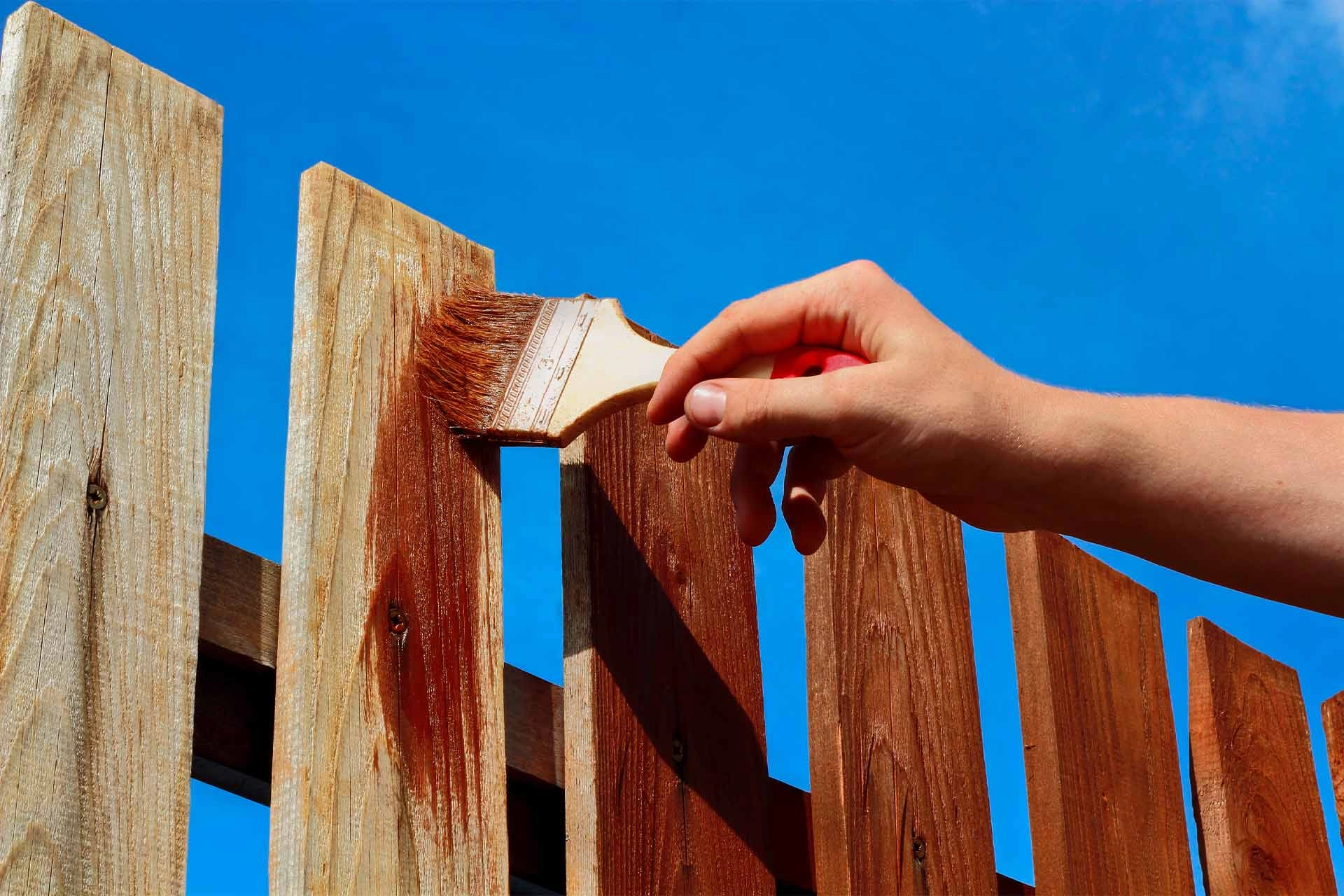
Checkatrade
Before you start
Types of Fencing
Before you start fence painting, it’s good to know what you’re up against. First you need to take into account what type of fence it is that you intend to paint. There are three main types of fencing: traditional wooden overlapping feather edge fences , concrete fences and panels or trellises .
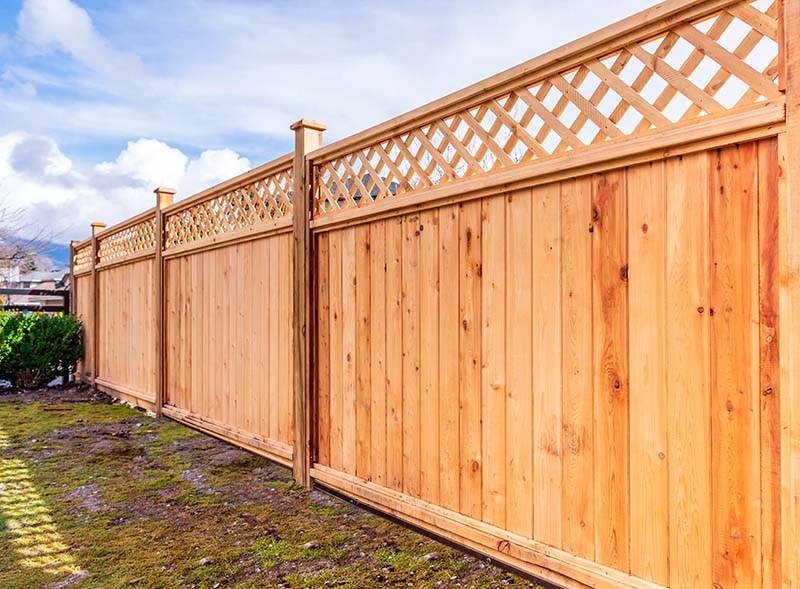
Postsaver
Wooden feather edge fences, fence panels and trellises require particular paints such as Cuprinol or Ronseal fence paint . These are specially formulated to cover and enhance wood and are available in a variety of attractive colours. To paint concrete fences, you will need an epoxy-based masonry paint.
The right tools for the job
It is always best to ensure you have all the correct tools and materials that you need before you start. Below is a checklist that you’ll need when painting a garden fence
Tools and Materials:
- Pressure washer
- Scrubbing brush
- Safety goggles
- Mask
- Paint brushes and rollers
- Paint sprayer (optional
- Exterior wood paint primer Exterior wood preserver
- Exterior wood paint
- White spirit
- Sandpaper
- Plastic sheeting
- Gloves
You may not need all of the above as it depends upon the fence, its condition and how you are painting a garden fence.
Preparation is everything
Check the Great British weather
The last thing you want when painting a garden fence is rain, or worse. So, the first thing you need to do is check the weather forecast and pencil in a couple of days of fine, warm, dry weather. Painting a garden fence in the rain is never a good idea as the fence paint is in danger of not sticking properly and streaking.
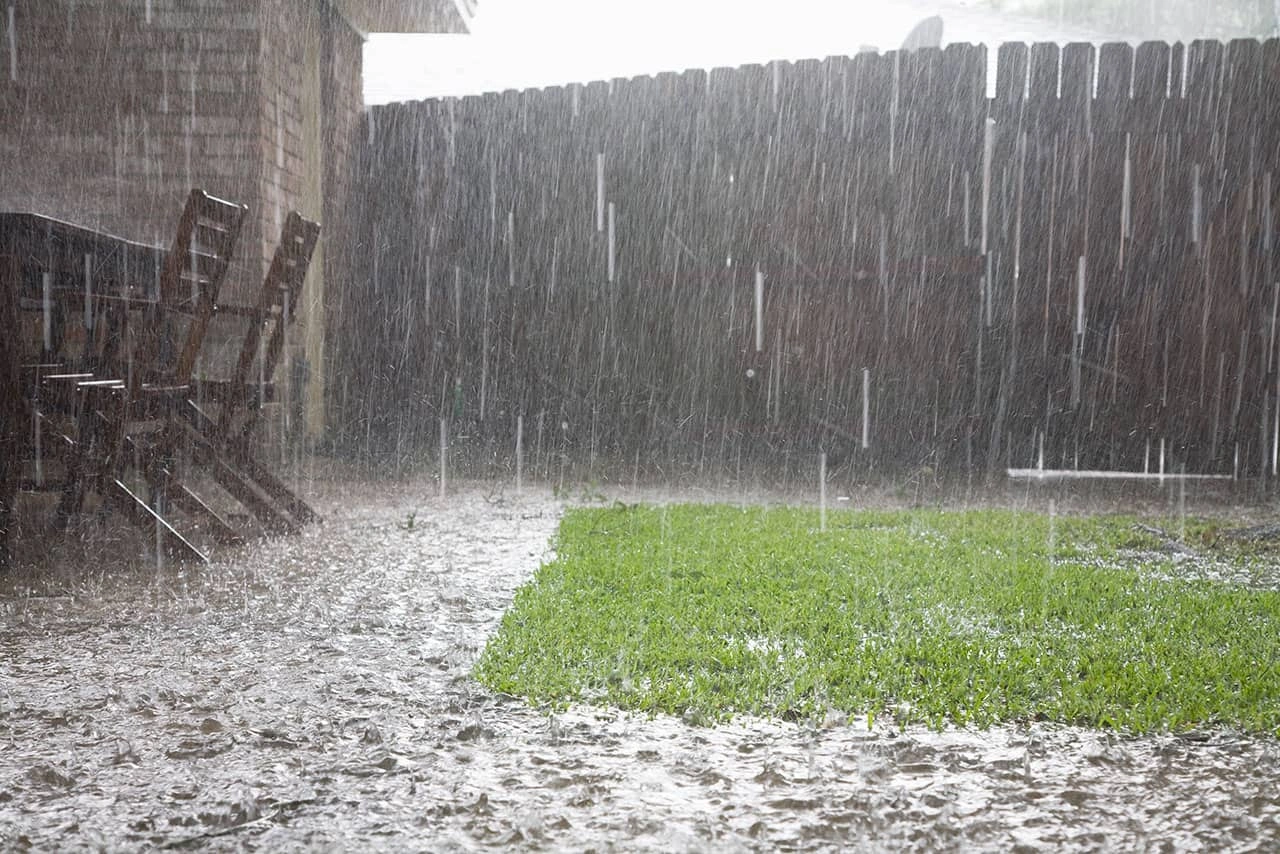
Legend Fence Corp.
Protect your garden
Even if you’re careful, fence painting can be a messy job, so it pays to protect your garden and garden furniture before even opening a tin of fence paint. Ensure you move anything away from the fence and cover anything with plastic sheeting that might be in danger of coming into contact with fence paint.
If there are plants or shrubs that come into contact with the fence, tie them back using ties and sticks. This will also give you better access when you are fence painting.
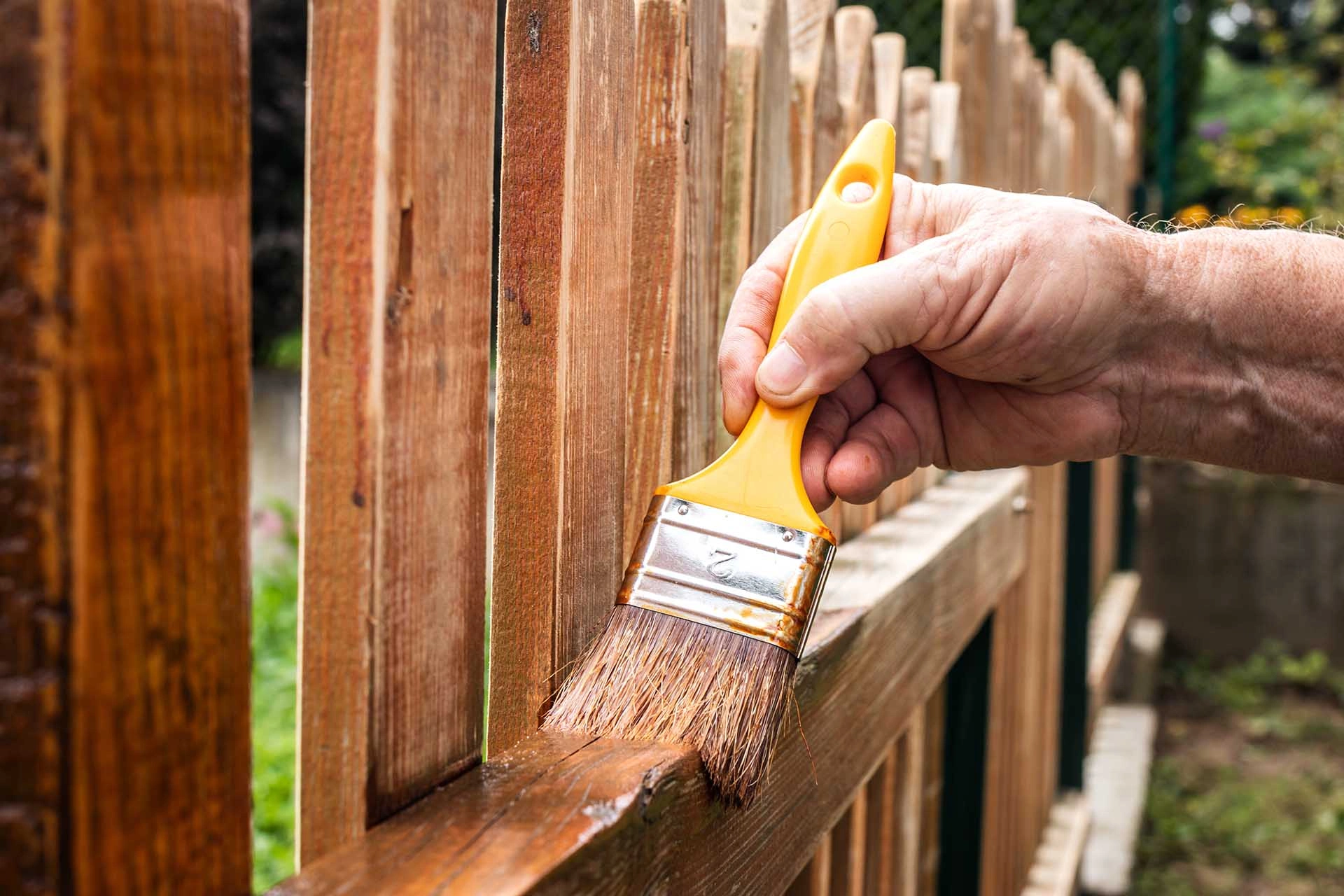
Alsford Timber
Prepare your fence for painting
Before you can start painting a garden fence, you need to ensure it is properly prepared and ready to accept the fence paint.
- Brush any dirt, cobwebs or loose debris from the fence.
- Pressure-wash the fence if necessary and allow to dry thoroughly.
- Scrub any particularly stubborn areas with a scrubbing brush.
- Sandpaper any especially rough areas of wood.
Note: if you have new, pressure or
dip-treated fence panels, we recommend that you allow these to weather for at
least 2-3 months. This will allow their original treatment to wear away to an
extent. If you were to paint them immediately, your fence paint could flake
away.

Howarth Timber
To prime or not to prime?
Always check the manufacturer’s instructions before applying any paint as you may be required to prime the surface first. One or two coats of primer are usually enough and can make a big difference to the final finish and durability of the coat of fence paint. If you are choosing an exterior wood primer, it’s often a good idea to use one from the same manufacturer as your fence paint.
Priming wood
When applying wood primer, use long even strokes that go with the grain. Also, try to ensure there are no drips or uneven patches as these could be visible through the fence paint.
Priming concrete
Concrete fences are porous and will definitely need priming as it will help your fence paint adhere to the surface. Go for an acrylic latex primer and apply not one, but two coats. Allow it to dry completely before applying masonry fence paint. A roller will give you the best finish and is often easier when covering large areas.
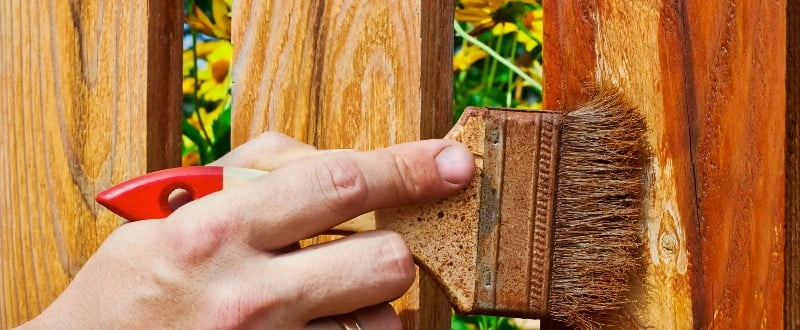
Welch Fencing
Choosing fence paint
There are four considerations when selecting a fence paint – suitability, durability, sustainability, and fence paint colours.
Suitability – is the fence paint the correct one for your fence type? Exterior garden fence paint, like Cuprinol or Ronseal fence paint has been specially formulated for wood.
Durability – some people like fence painting and find it therapeutic, however, if like most you find it to be a chore, the durability of a fence paint is important. Once you’ve painted it, you want it to look beautiful for years before having to paint it again. Some fence paints, for example Ronseal wood paint, claim to offer 10 years of protection.
Sustainability – if you want environmentally friendly paint that reduce or eliminate VOC emissions and help to create a healthier outdoor living space. So even grey fence paint can be “green” fence paint.
Fence paint colours – want to know what fence paint makes garden look bigger or simply want fence painting ideas? Pinterest and Google image search are great sources of inspiration and show you fence paint colours in various different settings. The main garden paint manufactures offer a wide spectrum of colours for you to choose from that you can carefully match to your exterior colour scheme.

Planeo
Painting a garden fence
Your garden fence is primed and ready. Now comes the exciting part where you bring your fence to life with your choice of fence paint. How to paint a garden fence is relatively simple and just requires a bit or prep, patience and decent weather.
First, open and stir your fence paint. Thorough stirring ensures that the fence paint is properly mixed and will give you the perfect even coverage.
There are three ways you can apply fence paint – brush, roller or spray. How to paint a garden fence depends on your fence and the fence paint you use. For example, a brush is great for getting into lots of nooks and crannies, a roller is quick for covering larger flat areas and a sprayer is fast and easy for applying fence paint to big areas without gaps. You may even decide to use a combination of methods such as a brush for edges and roller for expanses.
- Using a paint brush
You may need a wide brush for covering large areas and a smaller brush for the edges and details. For a smooth finish, always paint in long strokes in the direction of the grain. Start at the top and work your way down, brushing any drips into the wood as you go.
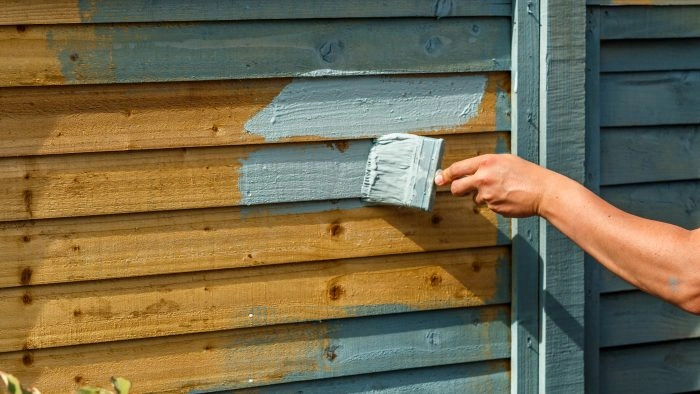
Build and Plumb
- Using a roller
Instead of a brush, a paint roller is a good alternative if you have a smooth surface. It enables you to cover quicker than a brush and it gives a great finish. Pour the paint into a tray and ensure you coat your roller evenly. Remember to work from the top down.
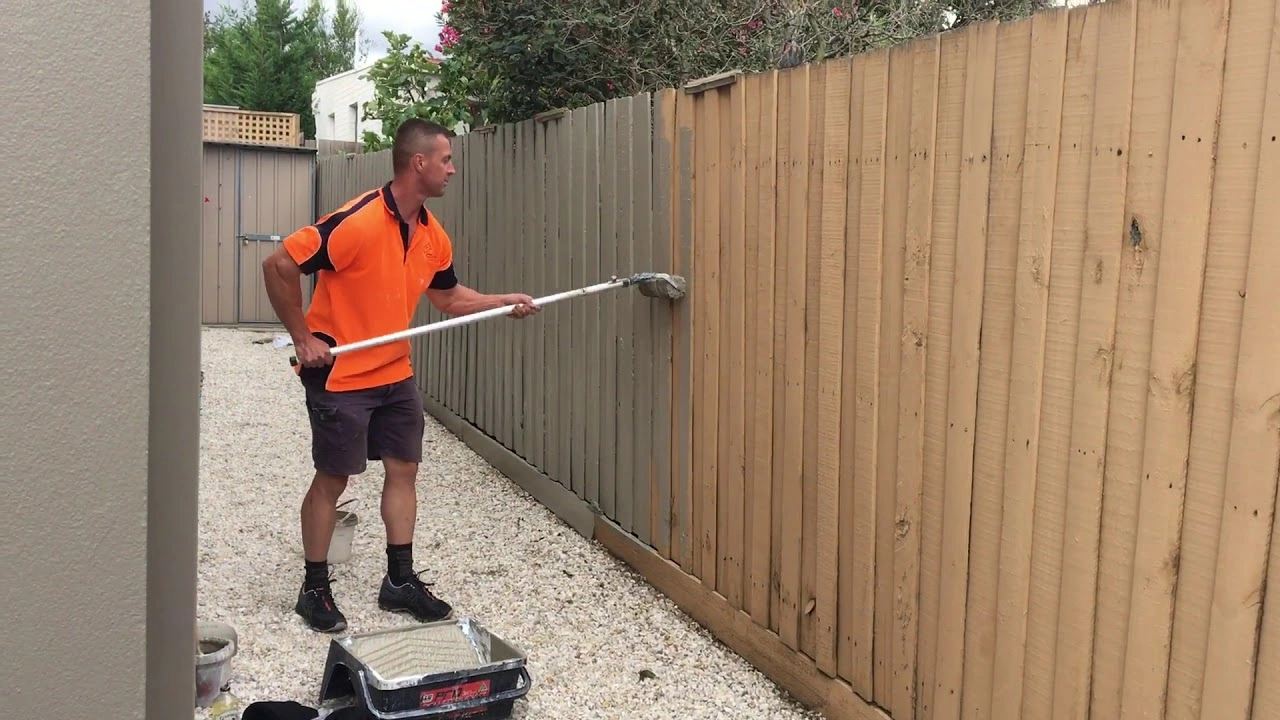
YouTube
- Using a sprayer
If you have a large expanse of fencing which has no, or few gaps, a fence sprayer can make fence painting much faster and easier. Do ensure that the paint you are using is suitable for a sprayer and always wear a mask and goggles when spraying. It’s also important that you protect anything you don’t want painting by masking with plastic sheeting as overspray is quite common. Any drips or dribbles can be worked in with a brush.
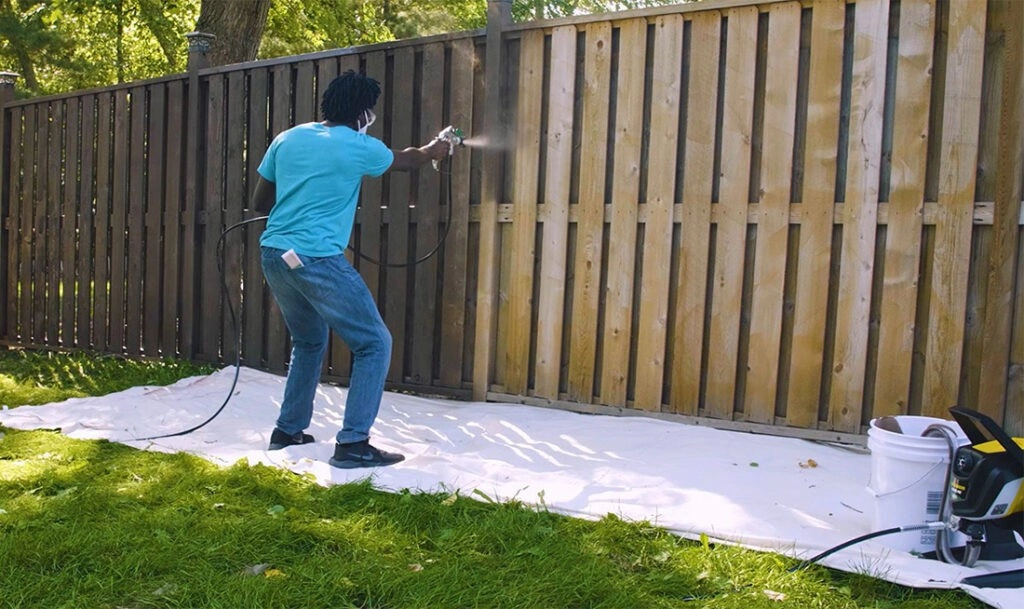
Wagner SprayTech
How many coats of fence paint?
This depends very much on whether you have primed your fence and the formulation of the paint. Most manufacturers recommend between 2 and 3 coats to get the perfect coverage and finish. The back of the tin will display the number required.
How long does fence paint take to dry?
Again, this depends on the formulation of the paint. For example, on a fine dry day, Cuprinol Garden Shades has a recommended recoat time of 8 hours. Always check the label though and recoat according to the manufacturer instructions.
Cleaning up
Despite having a drying time of hours, you really should clean your brushes, rollers, sprayer and other tools which come into contact with fence paint as soon you have finished. Water-based fence paint comes off in water, so a bucket of warm soapy water is great for cleaning them. Follow manufacturer’s instructions when cleaning a sprayer.
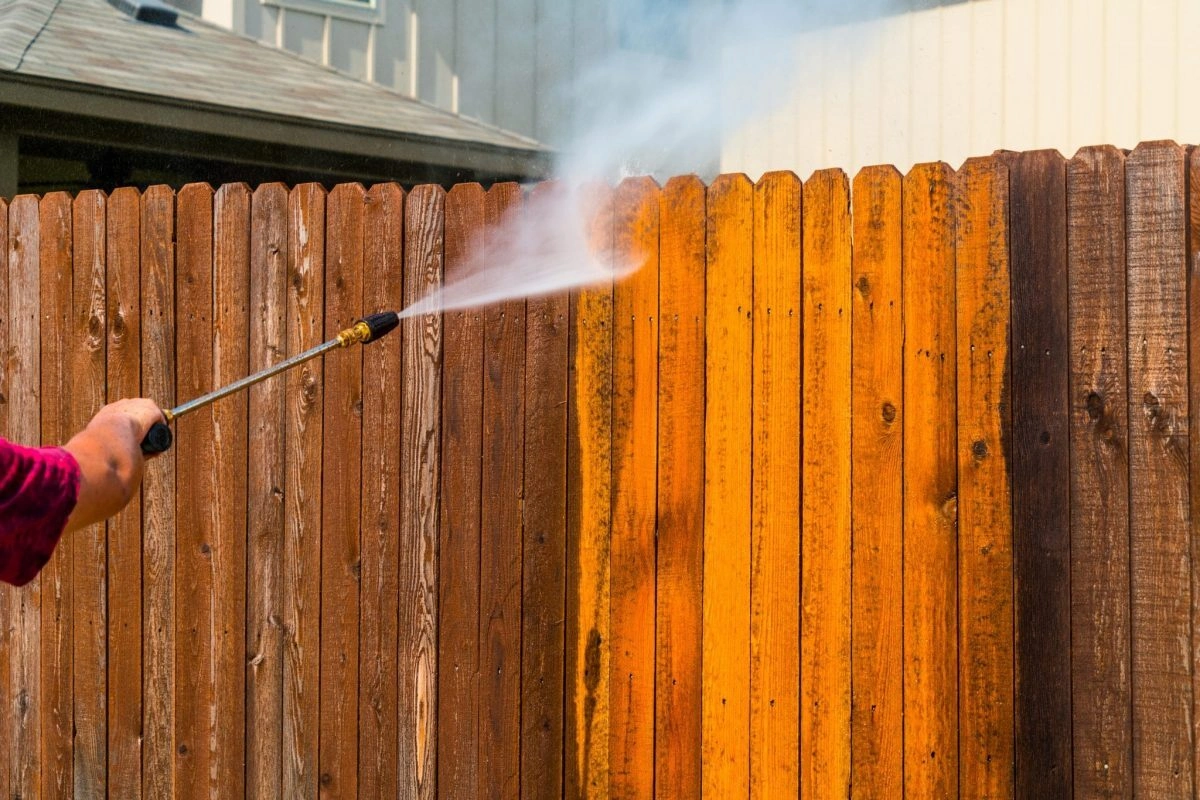
Promain
Oil-based garden fence paint requires white spirit for cleaning. Never try to clean oil-based paint covered tools in water. Simply fill a glass jar with white spirit and let your brushes or rollers soak. Then clean them off on kitchen roll before letting them dry.
Always ensure that you put lids back on tins and containers firmly and store them in a cool dry place. A dry shed is a tempting place, but a harsh winter could alter the formulation of the paint, so indoors in a cupboard or a garage will ensure you can use them again in the future. Now, what are you waiting for?
If you have any further questions on fencing, or you would just like to know some further information about the products we sell at Howarth, please visit your local friendly Howarth branch, or contact our customer services on the number 01472 907051.
Likewise, the Garden and Landscaping category on our Inspiration & Advice page is full of other helpful fencing guides, ranging from How to replace fence panels and Fencing: An Ultimate Guide .
You can also explore our wide range of fencing on our website here, or you can even visit us in branch for more information.
Recent Posts
-
An Introduction to Types of Paving
There are so many different types of paving out there, but which ones are right for your project? Wh
-
10 small outdoor kitchen ideas just in time for summer
As summer approaches, many homeowners are looking for ways to enhance their outdoor living spaces&md
